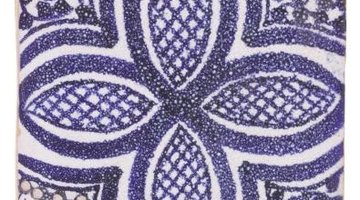How to Repair a Gouge in Tile
Interior designers and homeowners choose ceramic tile for its variety of colors, patterns and styles, as well as its ease of maintenance. Ceramic tile provides a hard surface on a floor, wall or countertop. Ceramic tile is not resistant to damage and can be scratched, marred and gouged. Sliding a heavy object across a ceramic surface can cause a gouge. Damage to the surface takes away from the aesthetic appeal of the tile, but repairing gouges will restore the tile's beauty.

-
Wash the damaged tile with trisodium phosphate to remove any dirt, oils and debris from the surface of the tile and the gouge itself.
-
Sand the edges of the gouge lightly with wet 240-grit sandpaper to remove any sharp edges. Immediately follow by sanding the gouge with wet 600-grit sandpaper. Dry the area with a rag and pick up any excess sanding dust, using a tack cloth.
-
Match an epoxy-based paint color to the tile color if the gouge affects the tile color. Apply two coats of paint with an artist's paintbrush. Allow each coat to dry fully between applications, generally one to one-and-a-half hours.
-
Apply light coats of clear epoxy to the gouge, using an artist's paintbrush. Allow each coat to dry completely, typically 45 minutes to one hour in between applications. The number of epoxy coats will depend on the depth of the scratch. Continue to layer clear epoxy on the gouge until it is flush with the surface of the tile.
References
- "Grandpa's 5001 Handyman Secrets"; Dr. Myles H. Bader; 2006
Tips
- Bring an extra tile with you to the store to match paint colors.
Writer Bio
Sal Marco began writing professionally in 2009. He has written many online home improvement articles based on his more than 20 years of experience in the home improvement and building industries. He has worked as both part of a team and as a site supervisor. Marco has a Bachelor of Science in management science from Kean University.
Photo Credits
- PhotoObjects.net/PhotoObjects.net/Getty Images
More Articles



